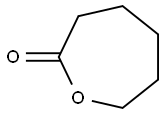Polylactic acid (PLA) is a green, novel, nontoxic, biodegradable, biobased, innovative thermoplastic packaging material. With enhanced strength, transparency, and high elastic modulus, this polymer can be derived from renewable sources like starch and/or sugar. Its glass transition lies between 50 and 80 °C, and its crystalline melting temperature varies from 130 to 180 °C. PLA exhibits a unique, viable, biodegradable substitute for plastics. Generally, bio-decomposition of PLA takes place in approximately 6–24 months, depending on the environmental conditions.
Polylactic acid (PLA) is an easy-to-process, biocompatible, biodegradable plastic. As such, it is used for medical implants like stents and implantable drug dispensers designed to biodegrade over time. Due to its low melt temperature and ease of use, it is also one of the most widely used 3D printing filaments for fused deposition modelling (FDM). Polylactic acid is guarded for food contact, highly transparent, and flexible to visible light; hence, it is extensively utilized for different applications of food packaging.
PLA fibres display low odour retention and outstanding water-resistant characteristics. In addition, due to its fat and oil resistance and good aroma barrier characteristics, these are popular raw materials for manufacturing thermoformed containers for food packaging.



